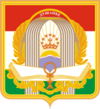Dushanbe
| Dushanbe | |||
|---|---|---|---|
 |
|||
|
|||
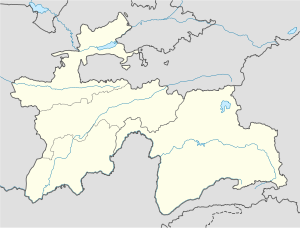 Dushanbe
|
|||
| Coordinates: | |||
| Country | |||
| Government | |||
| - Mayor | Mahmadsaid Ubaydulloyev | ||
| Area | |||
| - Total | 124.6 km2 (48.1 sq mi) | ||
| Elevation | 706 m (2,316 ft) | ||
| Population (2008)[1] | |||
| - Total | 679,400 | ||
| Time zone | GMT (UTC+5) | ||
| - Summer (DST) | GMT (UTC+5) | ||
| Website | www.dushanbe.tj | ||
Dushanbe (Tajik: Душанбе, Dushanbe; Dyushambe until 1929, Stalinabad until 1961), population 679,400 people (2008 est.), is the capital and largest city of Tajikistan. Dushanbe means "Monday" in Tajik,[2] and the name reflects the fact that the city grew on the site of a village that originally was a popular Monday marketplace.
Contents |
History
Situated on the confluence of two rivers, Varzob and Kofarnihon, Dushanbe(دوشنبه) is the capital of Tajikistan. Although archaeological remnants dating to the 5th century BC have been discovered in the area, there is little to suggest that Dushanbe was more than a small village until around 80 years ago. In 1920, the last Emir of Bukhara briefly took refuge in Dushanbe (then called Dyushambe) after being overthrown by the Bolshevik revolution. He fled to Afghanistan after the Red Army conquered the area the next year.
Dushanbe, which means "Monday" in Persian,فارسی, developed on the site of a Monday marketplace village, Dyushambe-Bozor,[3] and its former name Dyushambe was a Russified version of the word meaning "Monday" in Persian[4] (du-shanbe from du two + shanbe Saturday, lit. "second day after Saturday"). Following the Red Army victory in Central Asia the village was upgraded to town in 1925 and made the capital of the newly created Tajik Autonomous Soviet Socialist Republic (Tajik ASSR). After the transformation of Tajik ASSR to Tajik Soviet Socialist Republic (Tajik SSR) in 1929, Dyushambe was renamed Stalinabad, after Joseph Stalin. As part of Nikita Khrushchev's de-Stalinization initiative, the city was renamed Dushanbe in 1961.
The Soviets transformed the area into a centre for cotton and silk production, and relocated tens of thousands of people to the city from around the Soviet Union. The population also increased with thousands of ethnic Tajiks migrating to Tajikistan following the transfer of Bukhara and Samarkand to the Uzbek SSR. A peaceful and relatively prosperous city under Soviet rule, Dushanbe was home to a university and the Tajik Academy of Sciences. Severe rioting occurred in February 1990, after it was rumored that Moscow planned to relocate tens of thousands of Armenian refugees to Tajikistan. Dushanbe riots were primarily fueled by concerns about housing shortages for the Tajik population, but they coincided with a wave of nationalist unrest that swept Transcaucasia and other Central Asian states during the twilight of Gorbachev's era.[5] The city was badly damaged as a result of the Civil War in Tajikistan (1992–1997) that sprang up in the nation shortly after its independence. However resurgences in the Tajik economy have transformed Dushanbe into a rapidly growing commercial, cultural and industrial center. Many multi-story apartment and office buildings were constructed and the city was beautified during this period. Monuments and statues commemorating the city's Persian and Iranian past were erected.
Demographics
Dusanbe is currently made up of: 83.4% Tajiks, 9.1% Uzbeks, 5.1% Russians, 2.4% other.
| Year | Population |
|---|---|
| 1926 | 6,000 |
| 1936 | 83,000 |
| 1956 | 227,000 |
| 1971 | 388,000 |
| 1991 | 582,000 |
| 2002 | 579,000 |
| 2006 | 661,000 |
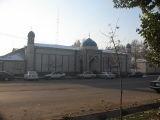 Mosque in Dushanbe |
 Orthodox church in Dushanbe |
Districts
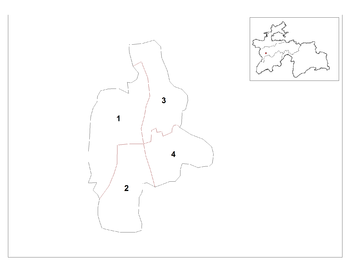
Dushanbe is divided into the following districts:
- Abu Ali Ibn Sina
- Firdawsi
- Ismail Somoni
- Shokhmansur
Climate
| Dushanbe | ||||||||||||||||||||||||||||||||||||||||||||||||||||||||||||
|---|---|---|---|---|---|---|---|---|---|---|---|---|---|---|---|---|---|---|---|---|---|---|---|---|---|---|---|---|---|---|---|---|---|---|---|---|---|---|---|---|---|---|---|---|---|---|---|---|---|---|---|---|---|---|---|---|---|---|---|---|
| Climate chart () | ||||||||||||||||||||||||||||||||||||||||||||||||||||||||||||
|
||||||||||||||||||||||||||||||||||||||||||||||||||||||||||||
|
||||||||||||||||||||||||||||||||||||||||||||||||||||||||||||
Dushanbe features a Mediterranean climate (Köppen: Csa). The summers are hot and dry and the winters are chilly, but not cold. The climate is damper than other Central Asian capitals, with an average annual rainfall over well over 500 millimetres (20 in) but is still highly continental and has the hot, dry summers typical of the region. Winters are not as cold as further north owing to the shielding of the city by mountain from extremely cold air from Siberia.
| Climate data for Dushanbe | |||||||||||||
|---|---|---|---|---|---|---|---|---|---|---|---|---|---|
| Month | Jan | Feb | Mar | Apr | May | Jun | Jul | Aug | Sep | Oct | Nov | Dec | Year |
| Source: World Meteorological Organisation [6], Hong Kong Observatory [7] | |||||||||||||
Economy
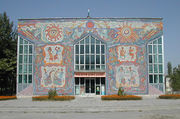
Coal, lead, and arsenic are mined nearby in the cities of Nurek and Kulob allowing for the industrialization of Dushanbe. The Nurek Dam, the world's highest as of 2008, generates 95% of Tajikistan's electricity, and another dam, the Roghun Dam, is planned on the Vakhsh River. A leading cotton textile center, Dushanbe also produces silk, machinery, electrical appliances, clothing, leather goods, tractor parts, and foodstuffs. The city of Dushanbe is now home to a number of modern telecommunications, aeronautic and other business corporations adding vitality to its economy. Tourism and ecotourism to the Dushanbe region is a component of the city's service industry, which includes shopping centers, cafes, restaurants, and hotels. Museums and theatres add a cultural element to the economy.
Buildings and attractions
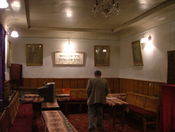
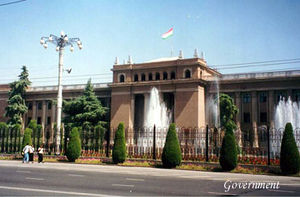
- Dushanbe Airport
- Haji Yakoub Mosque
- Dushanbe Synagogue (destroyed in summer 2008)
- Museum of Ethnography
- Tajikistan National Museum (Tajik Unified Museum)
- National Museum of Antiquities of Tajikistan
- Vahdat Palace
- Palace of Nations
- Dushanbe Zoo
- Botanical Garden
- Dushanbe Opera
- Dushanbe Circus
- Gurminj Museum of Musical Instruments (Gurminj Museum)
Education
Many of the most important universities and institutes are based in Dushanbe:
- Tajik State National University
- Tajikistan Humanitarian International University
- Agricultural University of Tajikistan
- Tajik State Medical University
- Tajik State Pedagogical University
- Tajik State University of Commerce
- Tajik University of Law, Business and Politics
- Tajik-Russian Slavic University
- Tajikistan University of Technology
- Tajikistan-Russian Modern University
- Technical University of Tajikistan
Transport
The city is served by Dushanbe Airport.
Sister cities
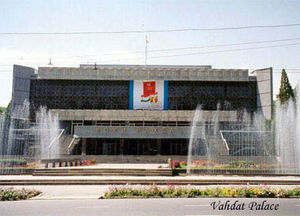
Currently, Dushanbe has 14 sister cities.
 Lusaka, Zambia (1966)
Lusaka, Zambia (1966)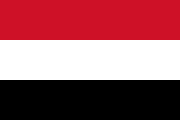 Sana'a, Yemen (25 June 1967)
Sana'a, Yemen (25 June 1967)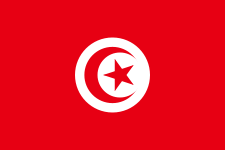 Monastir, Tunisia (24 November 1967)
Monastir, Tunisia (24 November 1967) Klagenfurt, Austria (1972)
Klagenfurt, Austria (1972)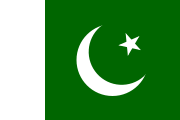 Lahore, Pakistan (15 September 1976)
Lahore, Pakistan (15 September 1976) Boulder, USA (8 May 1987)
Boulder, USA (8 May 1987) Mazari Sharif, Afghanistan (13 July 1991)
Mazari Sharif, Afghanistan (13 July 1991) Reutlingen, Germany (5 October 1991)
Reutlingen, Germany (5 October 1991)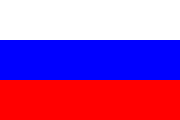 Saint Petersburg, Russia (6 October 1991)
Saint Petersburg, Russia (6 October 1991)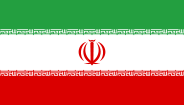 Shiraz, Iran (16 February 1992)
Shiraz, Iran (16 February 1992)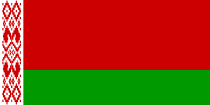 Minsk, Belarus (21 July 1998)
Minsk, Belarus (21 July 1998)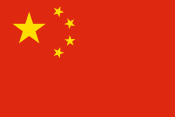 Urumchi, China (10 September 1999)
Urumchi, China (10 September 1999) Tehran, Iran (12 March 2001)
Tehran, Iran (12 March 2001)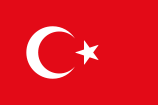 Ankara, Turkey (11 December 2003)
Ankara, Turkey (11 December 2003)
See also
- Farkhor Air Base
- Symphonic Orchestra of Dushanbe
- School for Deaf and Mute (Dushanbe)
Notes
- ↑ Population of the Republic of Tajikistan as of 1 January 2008, State Statistical Committee, Dushanbe, 2008 (Russian)
- ↑ D. Saimaddinov, S. D. Kholmatova, and S. Karimov, Tajik-Russian Dictionary, Academy of Sciences of the Republic of Tajikistan, Rudaki Institute of Language and Literature, Scientific Center for Persian-Tajik Culture, Dushanbe, 2006.
- ↑ Dushanbe in Dictionary of Geographic Names (Russian)
- ↑ Francis Joseph Steingass, A Comprehensive Persian-English Dictionary, on-line edition
- ↑ Ethnic rioting in Dushanbe, New York Times, 13 February 1990. Retrieved 18 October 2008
- ↑ 6.0 6.1 "World Weather Information Service - Dushanbe". World Meteorological Organisation (United Nations). http://worldweather.wmo.int/110/c00211.htm. Retrieved 2010-06-10.
- ↑ "Climatological Normals of Dushanbe". Hong Kong Observatory. http://www.hko.gov.hk/wxinfo/climat/world/eng/asia/westasia/dushanbe_e.htm. Retrieved 2010-06-10.
- This article incorporates information from this version of the equivalent article on the Russian Wikipedia.
External links
- Dushanbe pictures through eyes of westerner
- Dushanbe street map
- Encyclopedia Iranica article on Dushanbe
- Dushanbe on wikimapia
- Tajik Web Gateway
- Dushanbe City Coat of Arms
- Boulder-Dushanbe Sister Cities
- Steam Locomotive in a Dushanbe Park near the main railway station
|
|||||||||||
